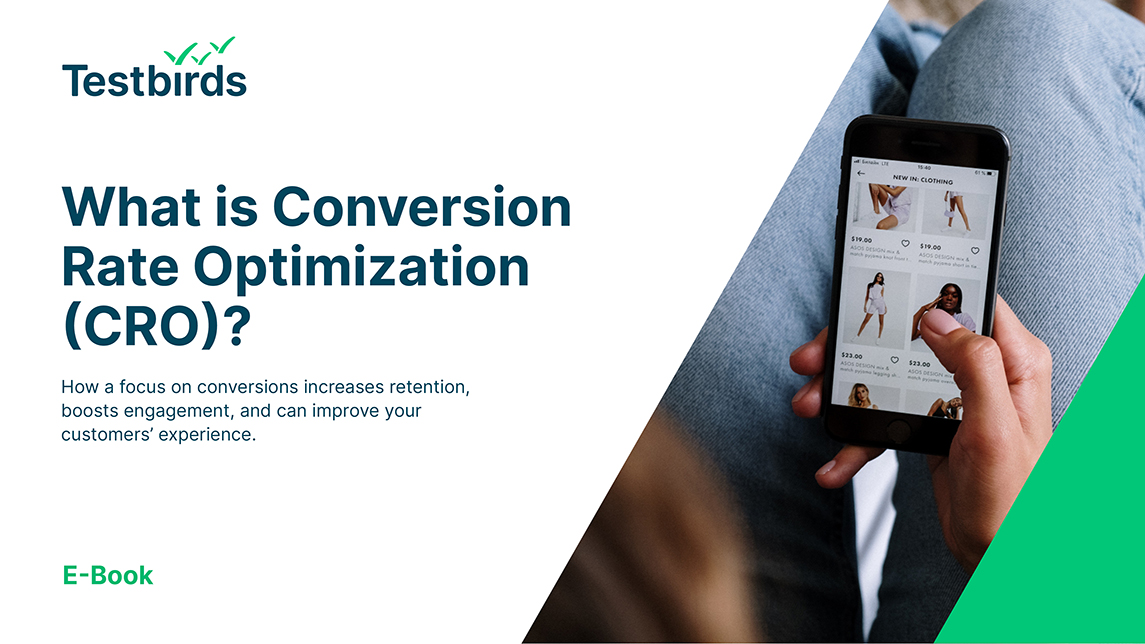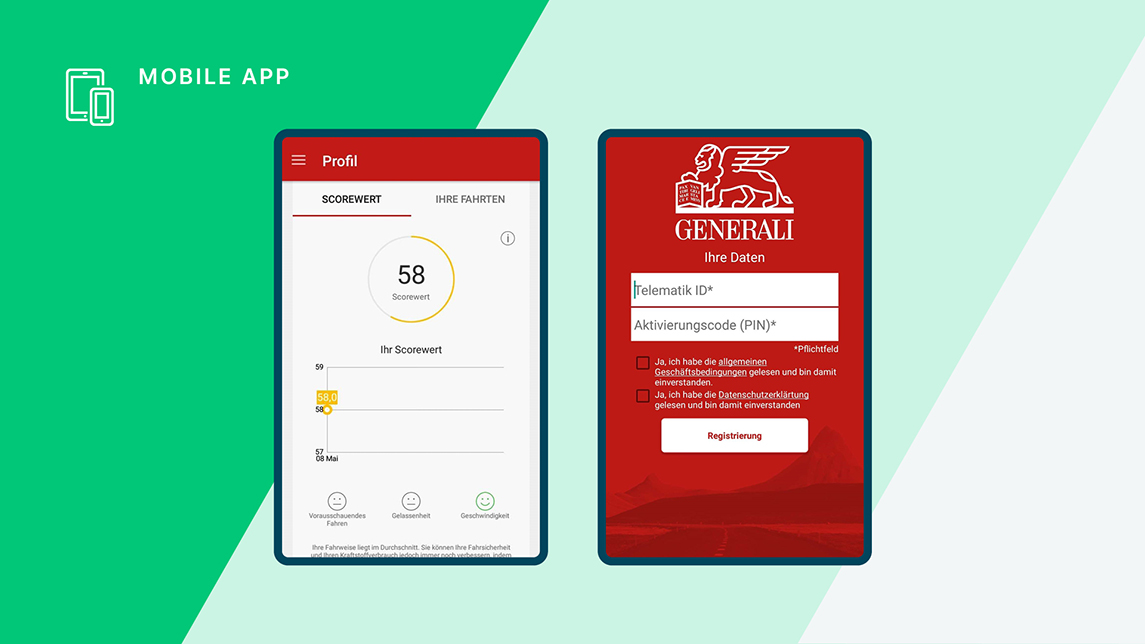In Brief
Discover the challenges and trends facing digital marketers, and offers the insights and proven methods to help future-proof your marketing.
In today’s digital age, consumers rely on the Internet to research products, find information, and make purchasing decisions. This makes digital marketing critical for businesses of all sizes. Simply put, it’s essential for any business that wants to stay competitive in our always-online world.
But why is digital marketing so pivotal? Because it offers a unique set of tools and strategies to reach target audiences, build relationships, and ultimately achieve business goals.
It’s a truly dynamic and fast-changing environment that must keep pace with changing technology, evolving customer expectations, and an ever-expanding list of channels to manage – from SEO, SEM, to web optimization, and a wide range of disciplines, including content, social media, email, mobile, and affiliate marketing.
Learn moreThis, of course, brings many challenges, from dealing with privacy regulations, data overload, competition, loss of third-party cookies, and (of course) user behavior. We’ll go into more detail about these (and many more) below, and look at some of the trends that intensify these challenges!
With that in mind, this article is organized around three key areas facing digital marketers: the challenges, the trends, and the ‘way forward’.
Are you ready to tackle the complex challenges of modern digital marketing? Then let’s dive into the heart of the matter and explore the many hurdles that every digital marketer must overcome!
Show lessSection 1: The challenges of modern digital marketing
Navigating today’s digital landscape isn’t for the faint of heart. Especially when every turn presents challenges that can derail even the most well-crafted ideas. But by understanding them, and knowing the right way forward, you can overcome these obstacles and build more effective and impactful campaigns.
And if there was ever a very big challenge, it’s this one.
Privacy regulations
Navigating the ever-evolving landscape of privacy regulations, such as the EU’s General Data Protection Regulation (GDPR), requires adapting data collection and personalization practices.
- Obtaining user consent and ensuring data transparency are critical to ensuring compliance and building trust.
- Balancing personalization efforts with user privacy rights is an ongoing challenge.
- Keeping up with changing regulations and interpretations requires constant vigilance and adaptation.
Data overload
Extracting meaningful insights from the vast amount of data available can be overwhelming and time-consuming.
- Marketers are bombarded with data from multiple sources, making it difficult to identify relevant insights.
- Lack of the right data analysis tools and skills can hinder the extraction of valuable information.
- Turning data insights into actionable marketing strategies requires effective interpretation and application.
Evolving user behavior
Keeping up with users’ ever-changing attention spans, preferences, and omnichannel expectations requires constant adaptation.
- Shorter attention spans and increased distractions demand concise and engaging content formats that get it right straight away. Just consider your website! It takes a person only 0.05 seconds to form an opinion about it.
- Understanding user behavior across multiple channels and touchpoints, especially social media, is critical to delivering seamless experiences.
- Users expect personalized experiences based on their individual needs and preferences.
Fierce competition
Being noticed in a crowded marketplace with rising acquisition costs and constant innovation requires strategic differentiation.
- Standing out from the competition requires unique value propositions and creative marketing strategies.
- Increasing competition drives up customer acquisition costs and requires optimization for maximum return on investment (ROI).
- It is vital to keep up with industry trends and adopt new technologies to stay ahead of the competition.
Measurement and attribution
Accurately measuring the impact of marketing campaigns and attributing conversions to specific touchpoints in the customer journey can be highly complicated.
- The complexity of the customer journey makes it difficult to attribute conversions to individual marketing touches, leading to challenges in understanding campaign effectiveness.
- Incomplete or inaccurate data can prevent accurate measurement and distort insights.
- Keeping up with the evolving landscape of measurement tools and methodologies can be time-consuming and requires ongoing learning.
Content creation and distribution
Breaking through content fatigue and reaching the right audience requires high-quality content and strategic distribution.
- Users are bombarded with content, making it difficult to capture attention and rise above the noise – which may show why some 52 percent of marketers worldwide felt their content marketing strategy was unsuccessful.
- Reaching the right audience across multiple channels can be challenging and requires a multi-pronged distribution strategy.
- Demonstrating the true value of content and its impact on business goals can be complex.
Skills and talent
Keeping up with the evolving digital landscape and achieving success requires skilled and adaptable marketing teams.
- The ever-changing industry demands new skills and knowledge, creating a gap between marketers’ skills and industry needs.
- Attracting and retaining top talent in a competitive marketplace can be challenging.
- Effective marketing requires seamless collaboration with other departments such as sales, product, and design, which can be hindered by siloed teams and communication gaps.
Technological advancements
Marketers must increasingly (and quickly) harness the power of new technologies while navigating ethical concerns and ensuring efficient implementation.
- Keeping up with the constant emergence of new technologies can be overwhelming, making it difficult to prioritize adoption and integration.
- Leveraging technologies such as AI and data collection raises ethical concerns around privacy, bias, and transparency, requiring careful implementation and responsible practices.
- Integrating new technologies with existing systems and processes can be complex, and demonstrating return on investment can be challenging.
Finding a representative audience for testing
Alongside having sufficient resources and being able to isolate variables, the one thing that’s truly critical to effective testing is accurately representing your target audience. But traditional methods often fall short.
- Your internal team may not reflect the demographics, behaviors, and preferences of your actual or intended audience.
- Finding diverse and representative participants can be time consuming and expensive.
- Testing with local audiences may not translate effectively to other regions, requiring a broader reach for accurate results.
Conversion Rate Optimization
Optimizing website and campaign elements to maximize conversions requires ongoing testing, analysis and strategic implementation.
- Determining which elements of your website or campaign are hindering conversions can be difficult and requires user research and data analysis.
- Implementing effective testing and iterating on different variations based on data can be time-consuming and require specialized skills.
- Accurately measuring the impact of CRO efforts and attributing conversions to specific changes can be challenging due to multi-touch journeys and data limitations.
Section 2: The trends in digital marketing today
Let’s take a quick look at the eight big trends for 2024 – keeping in mind that their specific impact will vary by industry and target audience. However, getting to know them and anticipating their challenges is essential for digital marketers who want to be proactive and adapt their strategies for future success.
- Privacy-focused regulations: Growing privacy concerns and regulations, such as GDPR, are making it more difficult to collect and use user data for personalized marketing and targeting. As a result, marketers need to find alternative ways to understand their audiences and deliver relevant experiences (such as understanding user intent and first-party data).
- Rise of privacy alternatives: Technologies such as cookie-less tracking and alternative identifiers are still evolving, creating uncertainty for marketers who rely on traditional data collection methods. Adapting to these changes and diversifying data sources is critical.
- Rising user expectations for personalization: Consumers expect relevant and personalized experiences and interactions across all touchpoints. Meeting this expectation requires responsible data collection, the potential use of AI for tailored content and recommendations, and more sophisticated data analysis, understanding, and privacy-compliant personalization strategies. Just consider, 71 percent of consumers expect personalized interactions (and 76 percent become frustrated when it doesn’t happen)!
- Proliferation of marketing channels and technologies: New platforms and technologies continue to emerge, fragmenting user attention and increasing competition for reach. Marketers must remain agile and adaptable to choose the right channels and technologies for their audiences and specific goals.
- Artificial Intelligence and Automation: While (generative) AI holds great potential for marketing, it can also contribute to challenges such as job displacement and ethical concerns around data use and manipulation. Responsible implementation and transparent communication are key.
- The growing role of influencer marketing: Influencer marketing might be highly effective, but managing influencer relationships, measuring ROI, and ensuring authenticity and alignment with brand values can be complex. But keep in mind, 43 percent of Internet users in leading online markets follow a social media influencer.
- The shift to automation and self-service platforms: Complex platforms with poor user interfaces can create frustration and confusion, while an overreliance on automated responses can miss subtle customer needs and decrease brand connection. Marketing teams also require adequate training and support to effectively utilize self-service platforms.
- The blurring line between online and offline: As brands integrate online and offline experiences, creating seamless omnichannel journeys requires deeper customer understanding and coordinated strategies across touchpoints (incorporating influencer activations in both spheres can potentially bridge that gap).
Now that we’ve taken a comprehensive look at the challenges shaping modern digital marketing, it’s time to look at the silver lining. In the midst of these challenges lie unparalleled opportunities for savvy digital marketers. Let’s explore the exciting possibilities that can take your marketing campaigns to new heights.
Section 3: The way forward for modern digital marketers
In this day and age of intense competition, shifting expectations, and new technologies, it’s pretty clear that marketing teams are in need of all the help they can get.
Crowdtesting for Functional Teams
Discover how you can optimize your website, campaigns, and brands with real user insights to truly resonate with your customers and improve your marketing ROI today.
Let’s take a look at several ways you can take your marketing to the next level!
Get Agile
There are two things you need to embrace going forward: agility and technology. Taking on a flexible approach means that you’re always ready to change when needed, which means focusing on:
- Emphasize the importance of staying updated on industry trends, technology advancements, and user behavior changes. Encourage regular skills development and knowledge sharing within your team.
- Leverage data analytics to understand your audience, measure campaign performance, and make informed decisions. Encourage testing and iterative optimization based on data insights.
- Develop adaptable marketing plans with room for adjustments based on real-time results and emerging trends. Avoid rigid long-term plans that might become obsolete quickly.
- Foster collaboration between marketing, sales, product, and other departments to ensure consistent messaging and alignment across the customer journey.
Such a flexible mindset is also essential when it comes to the technology you use:
- Upskill your team on relevant technologies to fully utilize their potential and avoid becoming reliant on external resources.
- Utilize AI & Automation to quickly personalize content, automate repetitive tasks, and generate valuable insights.
- Don’t just follow trends blindly. Choose technology that solves specific challenges and integrates seamlessly with your existing systems and workflows.
- Consider a mix of marketing automation platforms, data analytics tools, social media management systems, testing platforms, and other relevant solutions based on your needs.
Here are various technologies that can significantly benefit marketing teams:
- Customer Relationship Management (CRM) Systems:
CRM systems help marketers manage customer data, track interactions, and streamline communication. These tools enable personalized marketing campaigns, segmentation, and lead nurturing. Popular CRM platforms include Salesforce, HubSpot, and Zoho CRM. - Marketing Automation Software:
Marketing automation platforms streamline repetitive tasks, such as email marketing, social media posting, and lead scoring. These tools enable marketers to nurture leads, track customer journeys, and automate personalized campaigns. Examples include Marketo, Hootsuite, and Mailchimp. - Analytics and Business Intelligence Tools:
Analytics tools provide insights into campaign performance, user behavior, and overall marketing ROI. Google Analytics, Adobe Analytics, and Tableau are examples of tools that help marketers make data-driven decisions and optimize strategies. - Content Management Systems (CMS):
CMS platforms facilitate the creation, management, and publication of digital content. WordPress, Drupal, and Joomla are widely used CMSs that empower marketers to maintain a dynamic and engaging online presence. - Social Media Management Tools:
Social media management platforms allow marketers to schedule posts, monitor social conversations, and analyze engagement. Hootsuite, Buffer, and Sprout Social are examples of tools that streamline social media marketing efforts. - Search Engine Optimization (SEO) Tools:
SEO tools assist marketers in optimizing content for search engines and improving website visibility. Moz, SEMrush, and Ahrefs provide insights into keyword performance, backlink analysis, and competitor research. - Chatbots and Conversational Marketing Platforms:
Chatbots enhance customer interactions by providing instant responses and assistance. Platforms like Drift, Intercom, and Chatbot.com enable marketers to implement conversational marketing strategies, improving user engagement and satisfaction. - Artificial Intelligence and Machine Learning (ML) Solutions:
AI and ML technologies offer predictive analytics, personalized recommendations, and automation capabilities. Tools like IBM Watson, Google AI, and Amazon Personalize can be integrated to enhance various aspects of marketing, from content personalization to predictive analytics. - E-commerce Platforms:
For businesses engaged in online sales, e-commerce platforms like Commercetools, Shopify, and Magento provide a robust foundation for creating and managing digital storefronts. - Collaboration and Project Management Tools:
Collaboration tools such as Slack, Trello, and Asana help marketing teams streamline communication, manage projects, and improve overall workflow efficiency.
But to be truly agile, you need to prepare, prepare, and prepare… and then start early!
Get Ready
Starting early and being thoroughly prepared are the foundations for marketing excellence, and help ensure you’re ready to deliver your best. Here are some key stages to consider:
- Involve people from day one
- Engage key stakeholders, including team members, clients, and end-users, from the project’s inception. Gather insights and perspectives to ensure a comprehensive understanding of goals, challenges, and the target audience.
- Know your audience
- Create detailed user personas that encapsulate the characteristics and preferences of your target audience. Reference these personas throughout your campaign development to ensure alignment.
- Recognize that your target audience is not static. Continuously update and refine your understanding of their preferences and behaviors to stay relevant. And always keep them in mind throughout all following stages!
- Focus hard on what creates real value
- Clearly articulate the unique value proposition of the product or service. Communicate how it addresses the needs of the target audience and solves their pain points.
- Develop content that provides genuine value to the audience. Create informative, entertaining, or educational content that resonates with the target demographic and encourages engagement.
- Put together your action plan
- Develop a comprehensive action plan that aligns with overarching business objectives. Clearly define campaign goals, target audience segments, key performance indicators (KPIs), and the desired outcomes.
- Allocate resources effectively, considering both financial and human resources. Prioritize activities that align with strategic goals and maximize ROI.
Now that you’re ready to go, it’s time to fully consider what you’re up against!
Get Real
Armed with a firm strategy and a comprehensive knowledge of your audience, you can compete with businesses of all sizes – even with a limited marketing budget. But with all the preparation in the world, you still need to be highly realistic about what you can achieve, what you think will work, and what you believe you know about your audience.
While a great creative idea can take your campaign to the moon and back, there are still a few things you need to do to ensure it happens more than once!
- Make sure customer centricity is top of mind (and yes, that means investing time and resources). This means investing time and resources into understanding your customers’ wants, needs, and pain points through crowd surveys, comprehensive market research, and direct feedback. And always keep their preferences, needs, and feedback at the forefront of your marketing strategy to create campaigns that resonate, are user-friendly, and demonstrate genuine care for your customers.
- Recognize that your audience consumes content in diverse ways. To maximize reach, publish content in multiple formats such as engaging videos, visually appealing infographics, and shareable written content. This ensures that your message resonates across various preferences and platforms.
- Embrace an omnichannel approach to ensure a consistent brand experience across all touchpoints. However, don’t overlook the significance of mobile. As mobile usage continues to rise, optimizing your content and campaigns for mobile devices is non-negotiable for reaching a broader and more engaged audience.
Find out how crowdtesting with real people helped to optimize the DKB Miles & More credit card landing page
- Allow space for creativity in your campaign development process. Creativity often needs time to flourish. Dedicate time for brainstorming sessions, experimentation, and refining ideas. This deliberate approach can lead to innovative and impactful campaigns.
- Building relationships hinges on authenticity and transparency. Align your messaging with your brand values, and be transparent about your products or services. Authenticity resonates with audiences, fostering trust and loyalty. Coupled with the right content, it’s a powerful driver for building lasting connections.
Once you’re ready to go and development has started, early and ongoing testing is essential. But not all tests are equal and you need to find what works best for you.
Get Testing
While traditional methods of testing a campaign’s potential success, such as A/B testing, are still common (and useful), the changing nature of marketing requires new and varied ways to help create outstanding and highly personalized strategies and campaigns.
Let’s think about A/B testing for a second. While traditionally used by marketers, it doesn’t always provide the depth needed today, as Optimizely noted in its Evolution of Experimentation research: “People talk about A/B testing all the time; It’s about two variations, the A version and the B version. Turns out, the data reveals that it’s one of the lowest-performing methods of experimentation. Simple fix: just add more variations to your tests!”
Whether a digital product or an innovative and interactive marketing campaign, it has to be easy to use, understandable, and hit all the right buttons. A simple yes on A and no on B may simply not uncover the reality (for all people).
See how real crowdtesters helped to ensure the usability of the Generali Mobility App
The secret is to expand your testing to include a range of testing solutions, such as conducting a comparison study with a diverse group of people, so you can show them multiple versions of a given ad or marketing content (on various platforms) and find out exactly what they prefer and why.
This helps remove operational blindness while giving you real-world insights into what a diverse group actually thinks. Not just whether they liked a banner’s new color.
While achieving this requires effective communication and collaboration with the crowd throughout the testing process, the results can be a game-changer for your campaign.
Now consider the range of specific tests that can be done – from website and app testing (to ensure your solution is seamless, functional, and accessible), to ad testing (that lets you understand user interactions to your copy and design across social media platforms and search engines), to full campaign testing, and more.
Let’s explore how other testing methods, alongside crowdtesting, can complement traditional A/B testing:
- UX agencies: While UX agencies excel at designing digital solutions that are aligned with user needs, crowdtesting offers a more holistic testing service with diverse testers that encompass multiple scenarios.
- Digital Experience Analytics Platforms: Digital experience analytics platforms provide quantitative data on user interactions, but may miss qualitative aspects. Crowdtesting complements this by providing insight into real user preferences and frustrations.
- In-House Testing: In-house testing involves internal teams conducting QA testing, which ensures control and specificity, but can be costly and time-consuming. Crowdtesting improves this by providing a broader pool of testers and reducing the effort to set up tests.
- Beta testing: Both beta testing and crowdtesting involve real users testing products, but beta testing is more localized and focused on the customer experience. Crowdtesting expands this scope, allowing developers to gain insights from a larger user base.
- Test automation: Test automation provides speed and accuracy, but lacks the human element. Crowdtesting complements this by providing human insights that increase the effectiveness of automated testing.
- Market research: Traditional market research firms collect data through interviews and surveys, but can be limited in flexibility and cost. Crowdtesting provides a more agile and cost-effective approach, allowing for iterative testing and real-time insights.
The right test, and the right mix of tests, will help you tackle any number of challenges, truly resonate with your customers, and improve your marketing ROI.
But don’t think testing once is enough. As user behavior changes, trends appear, and competition changes tact, it’s likely that your campaign will need to follow suit, and that means you need to keep testing and stay on the move.
Get Moving
Continuous testing is a vital part of campaign development because it offers a wide range of benefits.
- Accelerate iteration cycles:
Continuous testing serves as an accelerator for iteration cycles. In a landscape where trends evolve rapidly, the ability to iterate quickly is a competitive advantage. It allows marketers to adjust strategies on the fly, ensuring that campaigns remain aligned with changing consumer behaviors and market dynamics. - Performance improvement as a core objective:
By systematically testing elements such as ad creative, messaging, and audience segments, you can gain actionable insights that pave the way for refining and optimizing campaigns for maximum efficiency. - Stay ahead of trends:
The digital landscape is dynamic, with trends and consumer expectations constantly changing. Continuous testing acts as a proactive measure, enabling marketers to stay ahead of trends rather than simply reacting to them. By identifying emerging patterns early, marketers can shape their strategies to meet evolving demands. - Track and adjust in real time:
Continuous testing extends beyond the initial campaign launch. Track campaign performance in real time and keep a watchful eye on key metrics. If there are significant changes in the market or consumer behavior, you can adapt quickly. This continuous testing approach ensures that your campaigns remain relevant and effective. - Post-implementation testing:
After implementing changes or updates, conduct post-implementation testing to validate the impact. Analyze performance metrics to measure the effectiveness of the changes made. This post-change testing loop ensures that adjustments are producing the desired results and provides insights for further refinement.
Incorporating continuous testing into your digital marketing DNA isn’t just a strategy; it’s a commitment to continuous improvement. The ability to adapt, refine, and optimize through continuous testing is a hallmark of digital marketing excellence that will help drive your campaigns to sustainable growth and success.
The future of digital marketing is tested and targeted
As consumers and businesses fully embrace today’s digital landscape, static campaigns are doomed to fail.
Confronting challenges with data-driven insights, staying on top of trends, being highly agile, and always putting the customer at the forefront are critical. And when combined with continuous testing that’s empowered by diverse perspectives and innovative tools like crowdtesting, then the potential for success knows no bounds.
Be ready to adapt and experiment as the future unfolds, and unleash the power of crowdtesting in your marketing efforts so that your campaign’s performance can truly take off.











